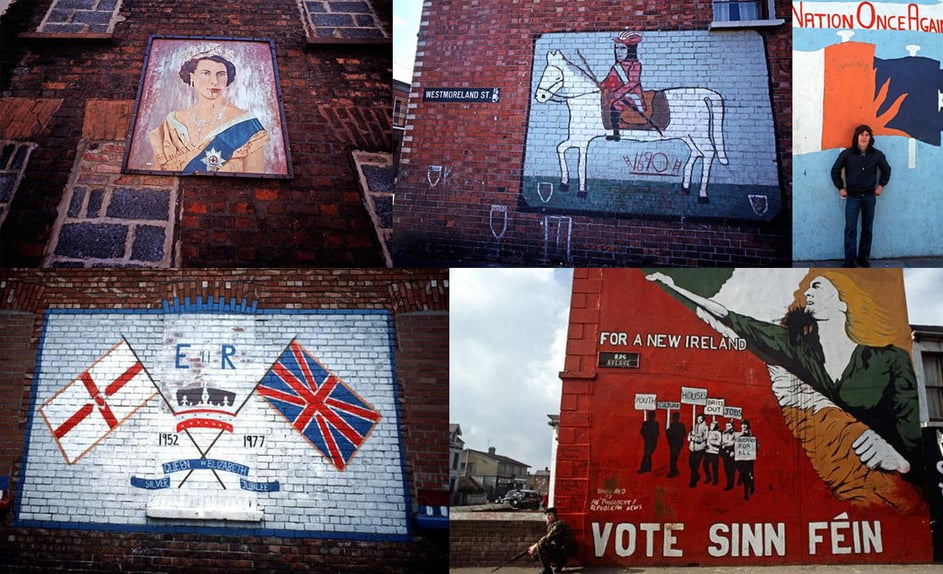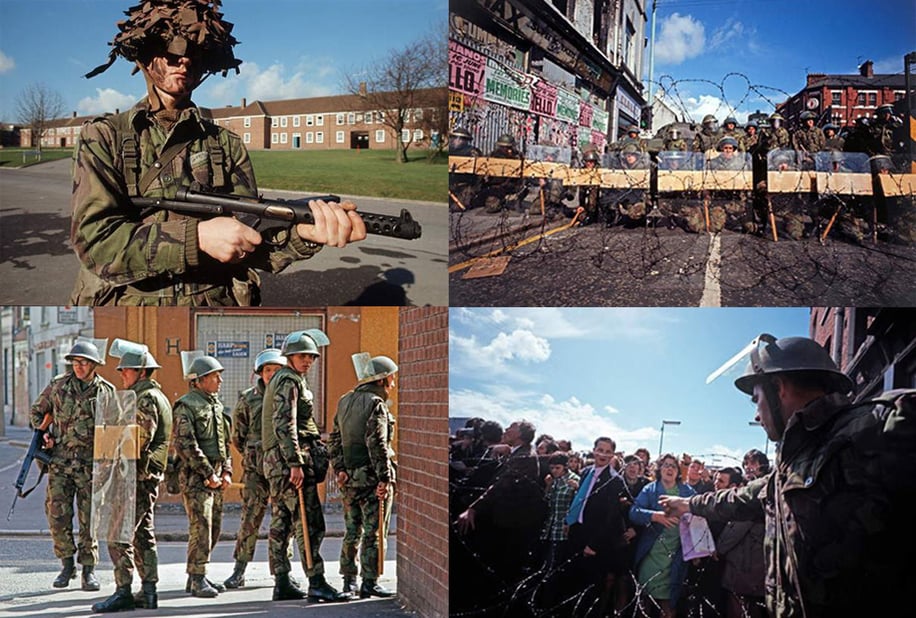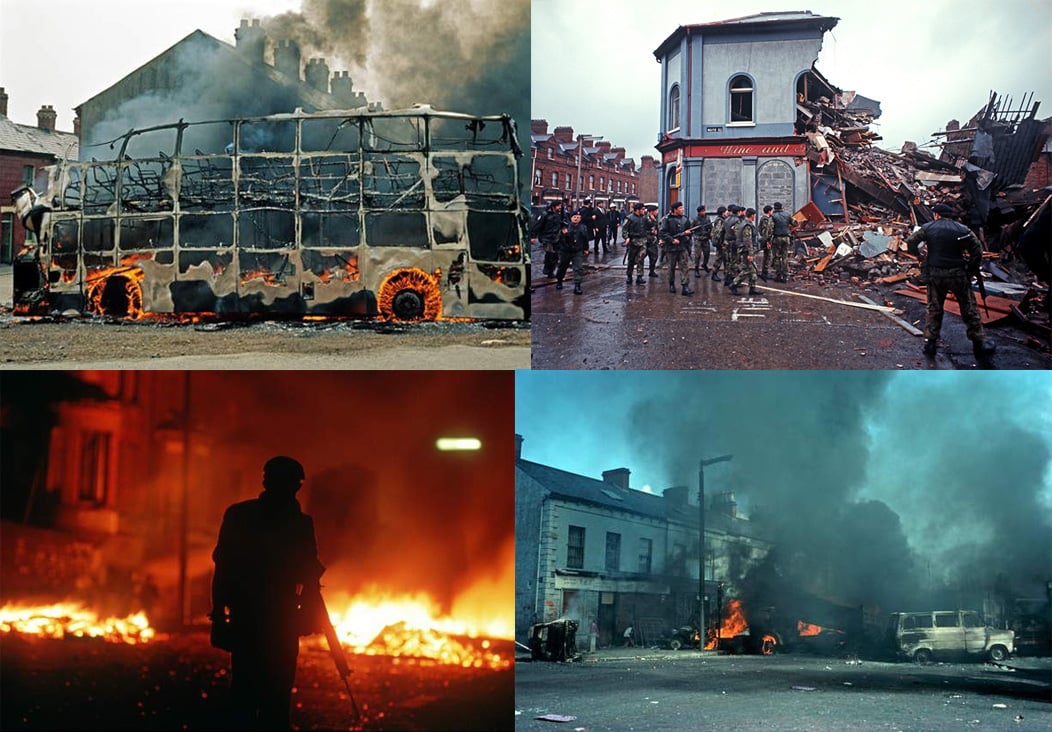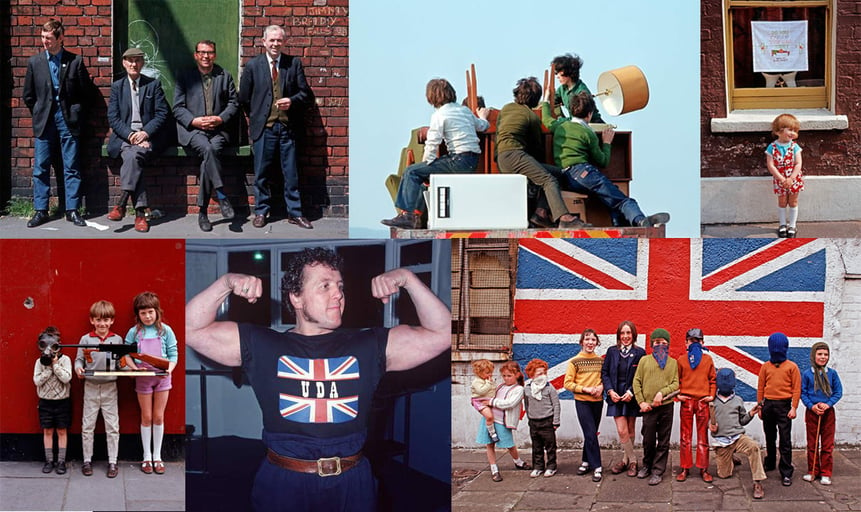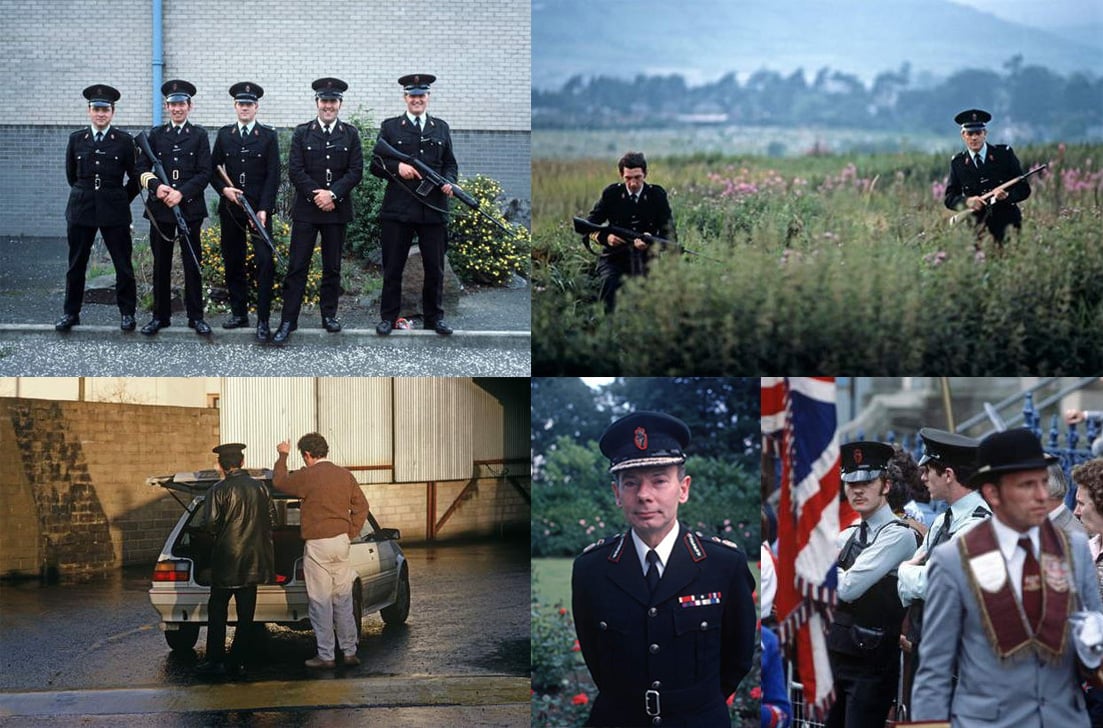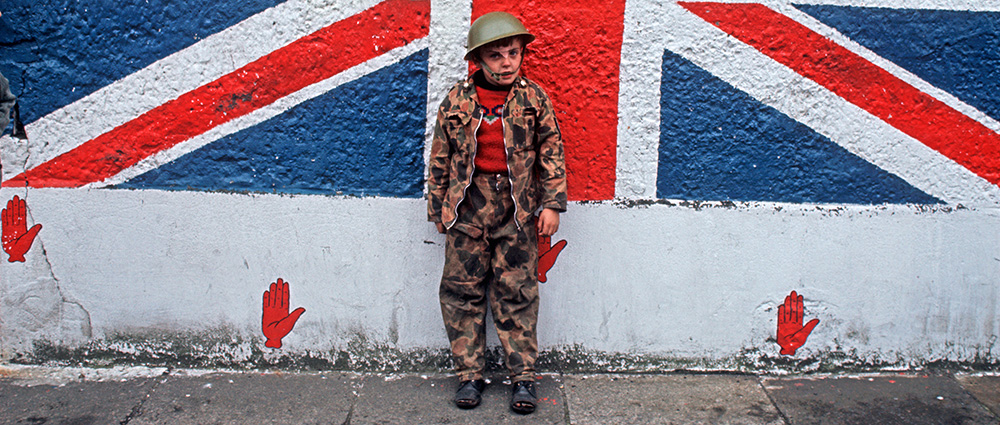
Alain le Garsmeur: Photographing The Troubles
The Troubles, internationally known as the Northern Ireland Conflict, was a “low-level” war that spanned a period of 30 years. Bridgeman Images photographer Alain le Garsmeur now lives in Northern Ireland, and his moving photos taken during the Troubles capture this unsettling and violent time in history. In August 2019, it will be 50 years since the deployment of troops in Northern Ireland.

Youths with petrol bombs during Rioting on the Falls Road, West Belfast, Northern Ireland, The Troubles, 1976 © Alain Le Garsmeur
Background to the Troubles
The conflict in Northern Ireland known as the Troubles had on the one side the unionists/loyalists who wanted Northern Ireland to say part of the United Kingdom, and on the other side the republicans who wanted to end British rule and become independent. Although this was a conflict about territory rather than religion, the loyalists were almost exclusively Protestant, and the republicans were overwhelmingly Catholic. The conflict began in October 1968 and ended with the Good Friday Agreement in April 1998. It resulted in the deaths of over 3,600 people and over 50,000 maimed or injured people.
The conflict began with a civil rights march that took place on 5th October 1968 in Londonderry. Since the creation of Northern Ireland in 1921, the Ulster Unionist Party (UUP) had held power. The UUP drew its support from the predominantly Protestant unionist/loyalist community and many of the policies it enacted marginalised and discriminated against the Catholic/nationalist minority. The civil rights movement in Northern Ireland – inspired by the campaign for equal rights in the USA headed by Martin Luther King – grew out of this inequality and was gaining momentum. Tension between the loyalists and the republicans had been mounting since changes being made in the Unionist run parliament to try address this discrimination – seen by the Protestant unionists as moving to quickly, and by the Catholic republicans as not moving fast enough. This tension came to a head during the Londonderry civil rights protest, with skirmishes breaking out between the largely protestant unionist police force and the protesters, resulting in many protesters being injured
Wide spread media coverage of the march and the police brutality caused uproar, and sparked more violent protests over Northern Ireland. This eventually led to the intervention of the UK government and the deployment of British troops in the region in August 1969. By 1972 things had deteriorated so badly that British government suspended the Northern Ireland parliament and imposed direct rule from London.

British Army controlling Rioting in the Streets of Derry after Apprentice Boys March during The Troubles, Northern Ireland, 1975. Photo © Alain Le Garsmeur
Alain Le Garsmeur: Photographing The Troubles
Bridgeman Images photographer Alain Le Garsmeur’s photographs cover many aspects of life during the Troubles, from the murals that appeared all over Belfast and Derry, to the presence of the British Army on the streets and the life of everyday people. They are often deeply moving, and provide a thorough record of life in Northern Ireland during this time…
Murals took on great significance during the troubles, marking areas within towns and cities as republican or unionist. They were particularly prevalent in Belfast and Derry, with almost 2,000 murals documented since 1970s.
The British Army were deployed to Northern Ireland in 1969, and stayed until 2007. Called Operation Banner, it was the longest continuous deployment in the British military’s history. They were initially brought in at the request of the unionist government of Northern Ireland after the riots of 1969, and supported the Royal Ulster Constabulary (RUC) to assert the authority of the British government.
During a period of 30 years, many acts of violence were carried out by paramilitaries and the security forces. From street battles to car bombs, the evolution of these methods of violence greatly influenced the tactics and impact of the conflict.
“Throughout the Troubles people were killed where they socialised, lived and worked. They were killed at sports events, in hospitals, in prison, leaving churches and even inside places of worship. The violence of the Troubles continues to impact upon communities. Beyond the dead it is estimated some 50,000 people were wounded. Tens of thousands served in the security forces, joined the paramilitaries and went to prison. More witnessed the horror of violent death.” Seamus Kelters, BBC journalist
People and everyday life during the Troubles
Some of Alain le Garsmeurs best photographs are of everyday life of the people of Northern Ireland during the troubles. Some are touching, some are disturbing – especially the photographs of children for whom violence had become commonplace.
The notorious Long Kesh Detention Centre (called The Maze by inmates) was used to house paramilitary prisoners during the Troubles, from mid 1971 to mid 2000. It was to be the scene for a number of political protests, including the 1981 hunger strike on which Steve McQueen’s film Hunger was based on. The inmates saw themselves as political prisoners rather than common criminals, who were being harshly and unfairly treated by the British government. By 1975 around 1800 people were detained there, 95% of them were Catholic/republican, and 5% Protestant/unionist.
Alaine le Garsmeur’s photographed the detention centre, as well as protest drawings and objects made by the prisoners.
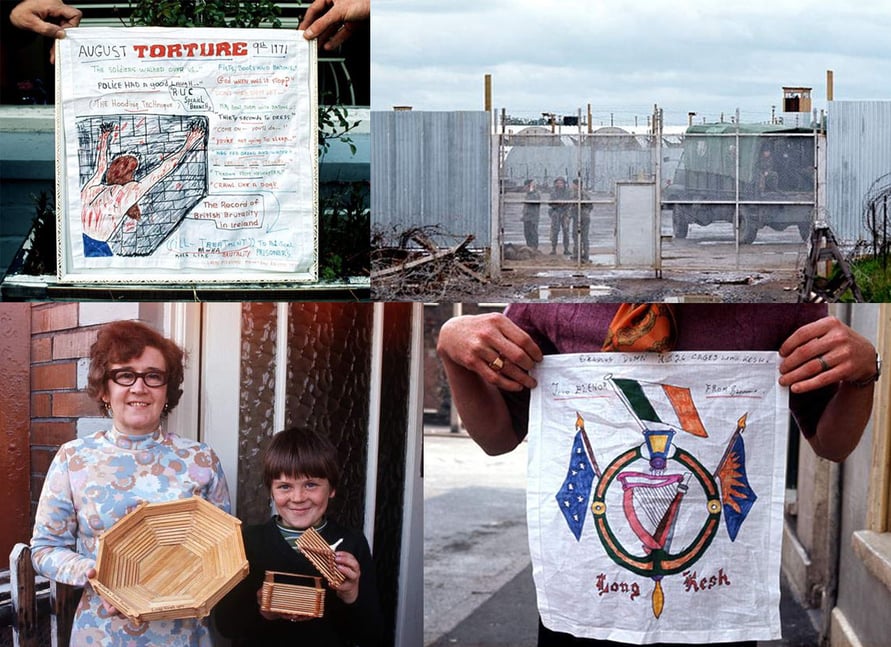
Montage: Long Kesh. Images of the detention centre, and drawing and artifacts made by the prisoners. 1970s.
The RUC was formed after the creation of the state of Northern Ireland in 1922, when the unionist government feared cross-border attacks or an internal IRA insurrection. It was an armed police force with the dual purpose of defending the state and maintaining law and order. It was largely seen by Catholics as the armed wing of unionism, rather than a partisan force protecting all. Only around 8% of the force was Catholic. The police and army were supposed to work together, but from the outset there was open hostility and rivalry about who should take the lead role. It was not until 1976 that the RUC was given primacy and took the lead in conducting anti-terrorist operations, with soldiers deployed in support of police officers rather than conducting their own operations.
Find out more:
See all of Alain le Garsmeur‘s photographs of the Troubles

